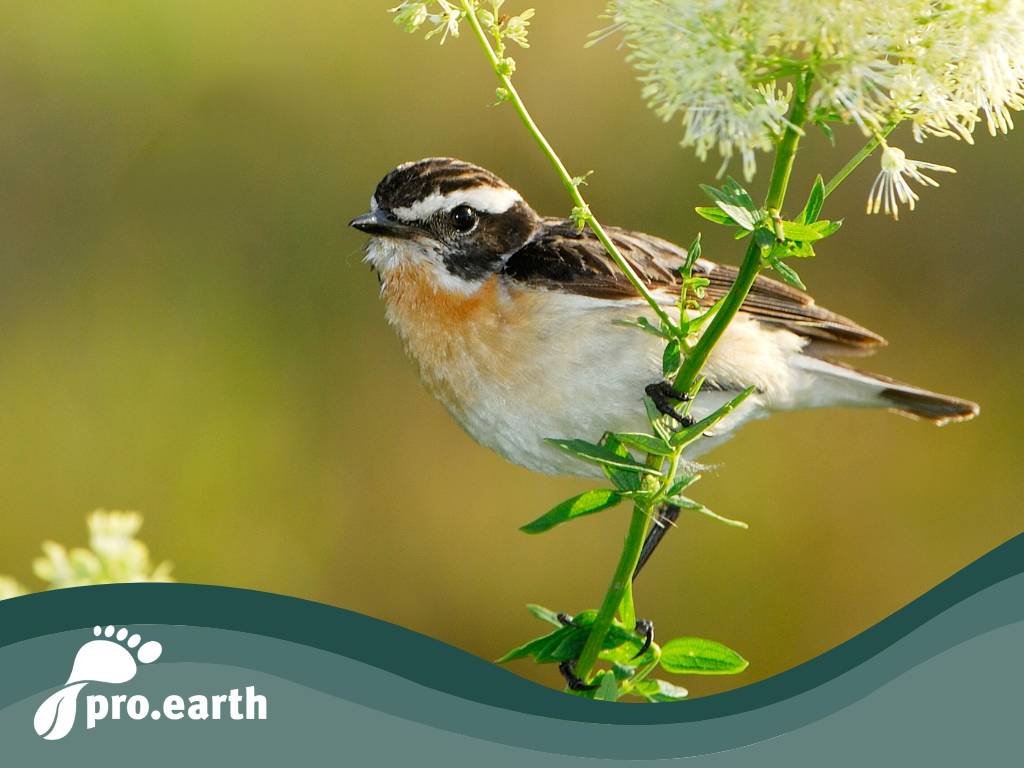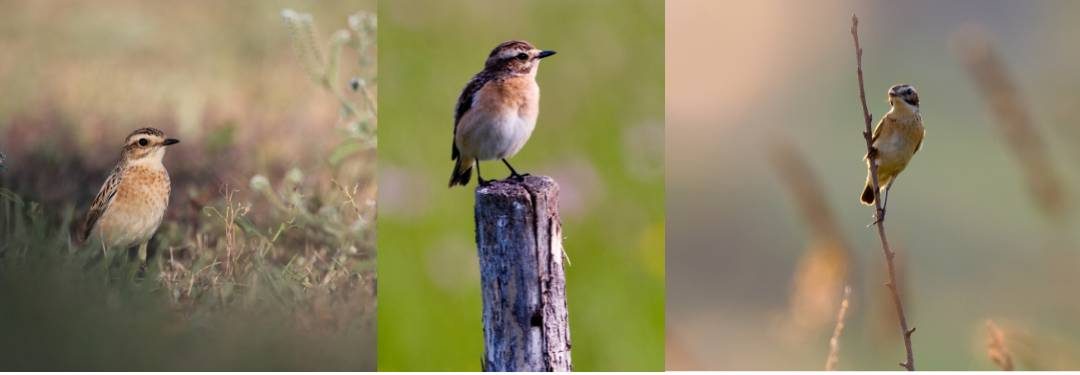The bird of the year 2023 - the whinchat

In both Germany and Austria, the whinchat, a meadow breeder, was voted Bird of the Year 2023. It is a critically endangered species. Between 1980 and 2016, the species declined by 57% in Germany and by as much as 63% in Austria (according to the Farmland Bird Index). Most breeding pairs in Germany are found in Mecklenburg-Western Pomerania, with current estimates suggesting a total of 19,500 to 35,000 breeding pairs. In Austria, there are only around950 to 1,500 breeding pairs, with the largest breeding population of 300 pairs in Tyrol.
At the end of April, the long-distance flyer, which travels around 5,000 kilometers every year, returns to us from its winter quarters south of the Sahara. Whinchats fly at night and rest or search for food during the day.
The ground breeder needs flower-rich meadows or fallow land as habitat. But theser vedwindlingt everywherewhich is why the whinchat population has been in dramatic decline for decades. It feeds on butterflies, gnats, grasshoppers and caterpillars, as well as spiders and small snails. Berries sometimes become the main food during the fall migration.
The bird conservation organization BirdLife Austria is calling for flower meadows to protect biodiversity and for the survival of the annual bird, as its survival depends directly on the protection of species-rich flower meadows.
Furthermore, the early mowing of meadows is a major problem for ground nesting birds because the first mowing often takes place too early and destroys their nests with the young birds.

Protective measures
"To do this, we need the farmers to work in partnership with us. farmers, who must be freed from the constraint of always having to invest in the survival of their
grassland farms ever more inmore intensive to have to farm more and more intensively in order to survive," says Braunkehlchen-expert Bergmüller from Birdlife Austria. Subsidies would therefore be just as essential as environmentalenvironmentally conscious consumerswho pay attention to the origin of the products.
To protect the whinchat, NABU Germany is also calling for a varied meadow landscape as well as "rewetting and more extensive grassland use, the reduction of fertilizers and biocides, and above all the adjustment of mowing dates to the breeding times of the whinchat (mowing only from mid-July)".






